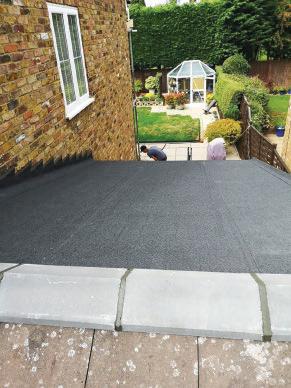

The Berkshire Countryside
Part of our gentle, golden world!
by Elara Quinn
There’s something quietly magical about October in Berkshire. The air feels softer somehow—cool enough to carry the scent of woodsmoke and damp earth, yet still touched with the last sighs of summer warmth. Morning light drifts through low mist, turning familiar hedgerows and open fields into something almost ethereal. It’s the perfect time to pull on well-worn boots, wrap a scarf around your neck, and set out along one of the county’s many winding footpaths.
Starting near Pangbourne, where the River Thames glides gently beneath old stone bridges, the landscape begins to shift from village charm to open countryside. The river here is peaceful, dotted with swans and narrowboats, while the Thames Path tempts walkers to follow its meandering course towards Mapledurham Lock, a scene so picturesque it could have stepped from a storybook.
The trees along the water shimmer with copper and amber tones, their reflections dancing in the slow-moving current.

Heading inland, the path leads towards Basildon Park, a grand 18th-century mansion cared for by the National Trust. Surrounded by sweeping parkland, it’s especially beautiful in autumn when the beeches and oaks frame the house in a halo of burnished gold.

From there, gentle trails weave through the North Wessex Downs, an Area of Outstanding Natural Beauty that offers panoramic views across rolling farmland and ancient chalk hills.



Further east, near Bradfield and Yattendon, the countryside becomes a patchwork of fields, woodland, and winding lanes. The Yattendon Estate’s little village square, with its inviting pub and local shop, is a perfect stop for coffee or something stronger before continuing through the quiet woods beyond. The soft rustle of leaves underfoot and the faint call of a pheasant breaking cover add to the sense of calm that only an English autumn can bring.
As you walk towards Bucklebury, you might catch glimpses of deer moving through the trees or stumble upon a farm shop piled high with pumpkins and apples. A short detour could take you to Donnington Castle, where the ruins rise proudly above Newbury, offering views across the valley below. Further south, the meadows around Silchester Roman Walls whisper of centuries past, their moss-covered stones holding stories of another age.
There’s comfort in these simple discoveries—the crunch of an apple just picked, the chatter of fellow walkers, the smell of woodsmoke drifting from a distant chimney. As the light fades, perhaps end the day in Goring-on-Thames, where cosy riverside inns serve hearty meals beside roaring fires. The sun sinks low, the sky turns violet, and the landscape takes on that deep, reflective quiet that only October brings.
An autumn walk through Berkshire isn’t about rushing or ticking off landmarks—it’s about rhythm, stillness, and appreciation. Each turning leaf and every winding lane reminds us to slow down, to wander without hurry, and to be part of this gentle, golden world for just a little while.










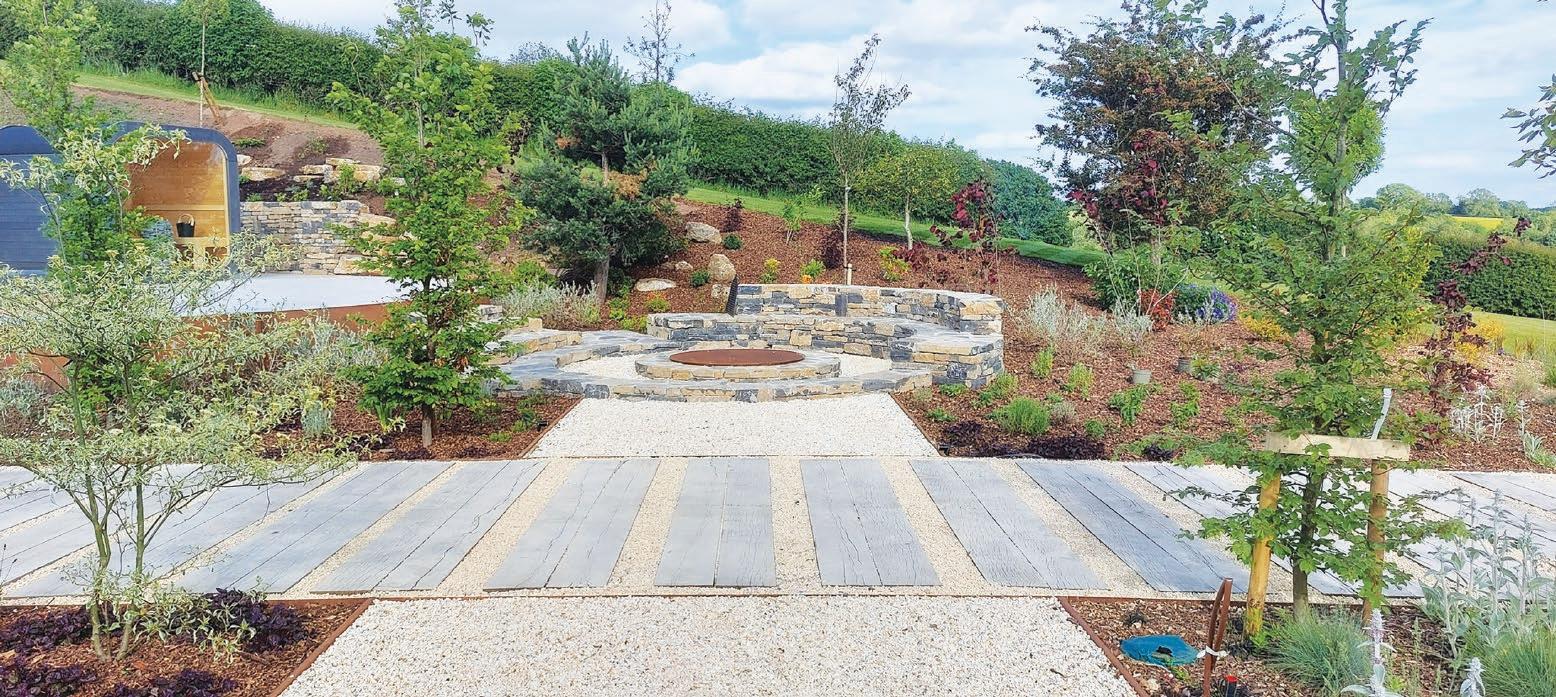

Welcome
Hello and welcome! This month, we’re inviting you on a delightful tour through some of Berkshire’s most charming corners, celebrating the communities, culture, and local treasures that make our county so special.
We begin in Wokingham, a town full of character, where bustling streets, cosy cafés, and friendly faces make every visit a joy. While you’re there, don’t miss Pratts Pods, the local tech hub where expert advice and personalised service make caring for your gadgets a breeze.
Next, we travel to the riverside beauty of Henley-on-Thames, a place where history, scenic views, and riverside charm meet. Nearby, in Fifield, Maidenhead, Kelperland Vets is looking after our four-legged friends with warmth and dedication – a lovely reminder of the care and compassion that thrive in our communities.
As the days grow shorter and the nights sparkle with light, it’s time to celebrate Diwali. Across Berkshire, families and friends come together to share laughter, light, and the delicious flavours of Diwali food – from golden samosas to sweet treats that fill kitchens and hearts alike. For a creative flourish, a visit to Holme Grange Craft Village offers handmade treasures and festive gifts, perfect for adding a personal touch to the season.
Whether you’re exploring towns, enjoying a culinary treat, supporting local businesses, or celebrating cultural festivals, Berkshire has something to delight everyone. We hope this issue inspires you to discover, savour, and celebrate all the wonderful experiences our county has to offer. Welcome, and enjoy the journey!
To contribute, feature, or advertise, contact: berkshire@localareamagazines.co.uk or please call 07306 146142
Berkshire Local Magazine is published by Local Area Ltd, a company registered in England & Wales number 13415030. Registered office: Markham House, 20 Broad Street, Wokingham, RG40 1AH.

Local Area Ltd has been publishing magazines since 2021, and is still an independent, family run business. Every issue we publish reflects our passion for the areas we serve, and with deep local roots, we’re dedicated to nurturing the unique character of our communities. I hope you enjoy our latest issue!
Jacqui Founder and Editor
@localareamagazines
Berkshire Local Magazine, © 2025, Local Area Ltd. Reprinting any part appearing in this magazine is strictly forbidden except by permission of the publisher. All copyright of images/content remains that of its contributors. Every effort has been made to gain permission to publish copyright material. However, where efforts have been exhausted, we have published based on ‘Fair Use’ to comment factual based material whereby its use is not central or plays a significant part in the entire publication but to act as an aid for historical and educational purposes only. This publication is offered as a limited print run. The publisher, Local Area Magazines, makes every effort to ensure that the magazine’s contents are correct. However, it cannot take responsibility for any effects from errors or omissions. Local Area Ltd accepts all advertisements in good faith but is unable to accept any responsibility or liability for any of the services or products provided by advertisers and encourages consumers to make checks before hiring/buying services, such as a vetted service provided by Trading Standards’ ‘Buy with Confidence’ scheme.
“It Feels Like Home”
The Heart of Holme Grange Craft Village, in Wokingham
For local Wokingham resident Helen Marsden, a weekend morning at Holme Grange Craft Village is more than a shopping trip — it’s a ritual that feels like family. “Everyone knows your name here,” she says with a smile. “You pop in for a loaf of bread or a bottle of wine, and end up chatting for half an hour.
The traders remember your favourite coffee, they ask after your children — it’s more than shopping; it’s belonging.” On a crisp autumn morning, that sense of connection is even more tangible, wrapped in golden sunlight, rustling leaves, and the faint scent of bacon wafting in the air.
The village comes alive slowly but vibrantly. Viv’s Café hums with early chatter, steaming mugs of coffee warming chilled fingers, while the scent of pastries drifts across the cobbled paths from A Dust of Flour and Sugar bakery, where buttery croissants, spiced tarts, and cinnamon swirls tempt visitors. Families

and friends wander leisurely, greeting familiar faces and discovering new favourites tucked into the converted barns and timbered cabins.
The independent shops are a celebration of creativity. Enchanting Glass Designs sparkles in the autumn light with handcrafted ornaments and suncatchers, while Thomas William Jewellery showcases elegant, hand-finished pieces that feel deeply personal — perfect for early Christmas shopping.
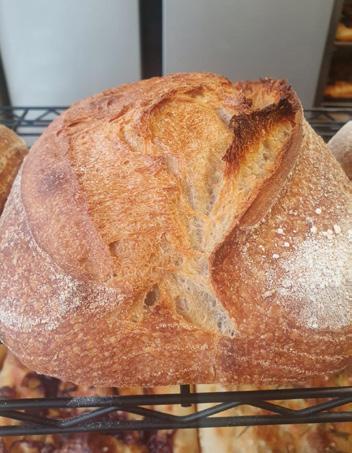

Elemental Cards offer collectible cards, workshops and merchandise from Pokémon, One Piece, Lorcana and more, plus Warhammer figures, each a miniature piece of art.

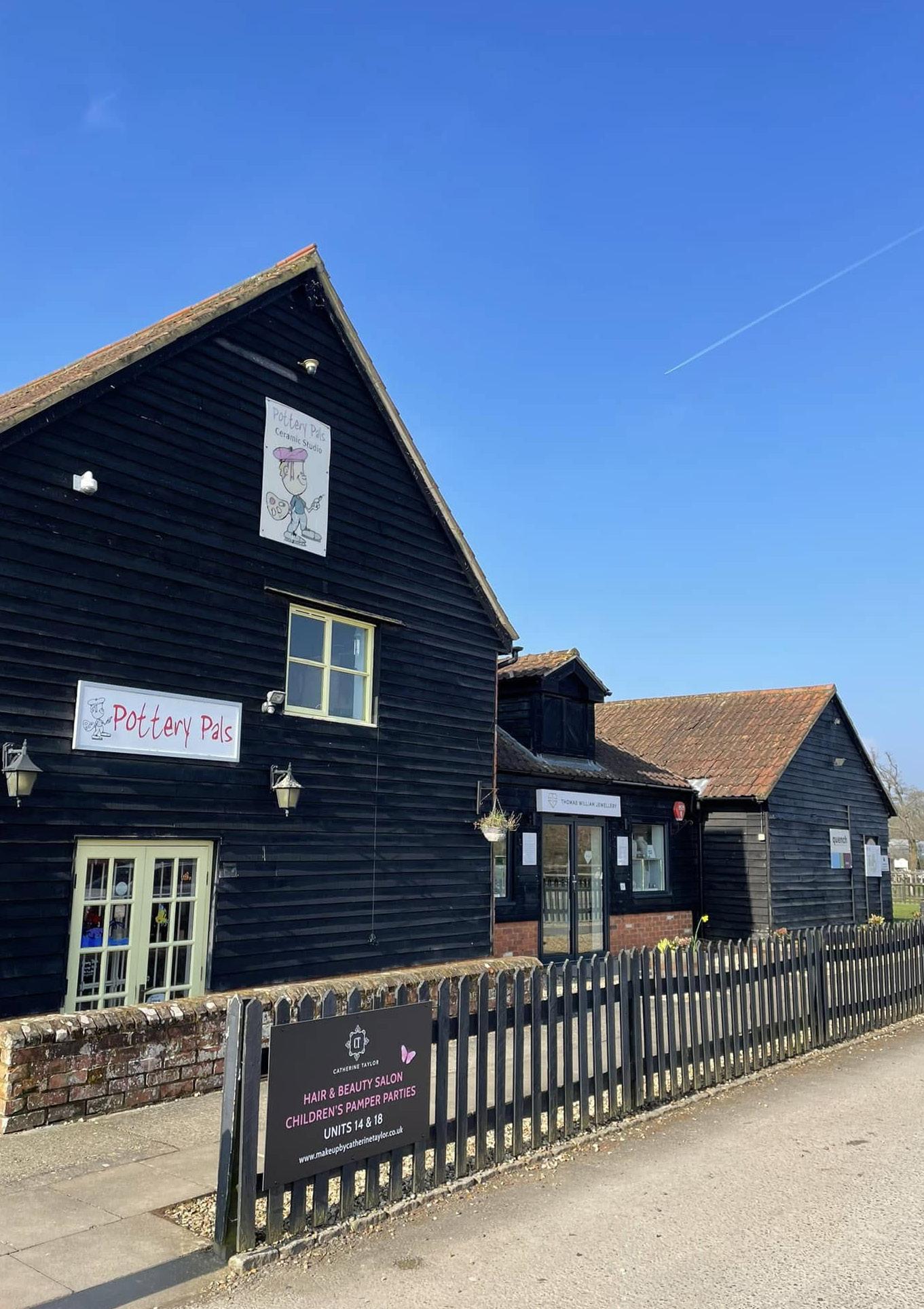
Lala’s Boutique delights shoppers with cosy knitwear, scarves, and chic accessories, bringing a touch of style to the season.
Children gravitate toward Pottery Pals, where bright laughter and colourful creations fill the workshop, whilst the SlimeHub is bursting with creativity, colour and sensory fun. Then, for those seeking calm, step into Catherine Taylor Beauty for soothing treatments.
A few steps away, the Tasting Barn invites visitors to sample locally crafted wines, beers,


and spirits, ideal for festive gatherings or thoughtful gifts. Finally, Quench Bookshop offers a quiet corner to browse novels, children’s books, and local interest titles — the perfect pause in a morning of exploration.
By mid-morning, the village courtyard is alive with warmth and community spirit. Shoppers carry handcrafted gifts, stylish finds, and the first hints of Christmas, while leaves swirl gently underfoot.
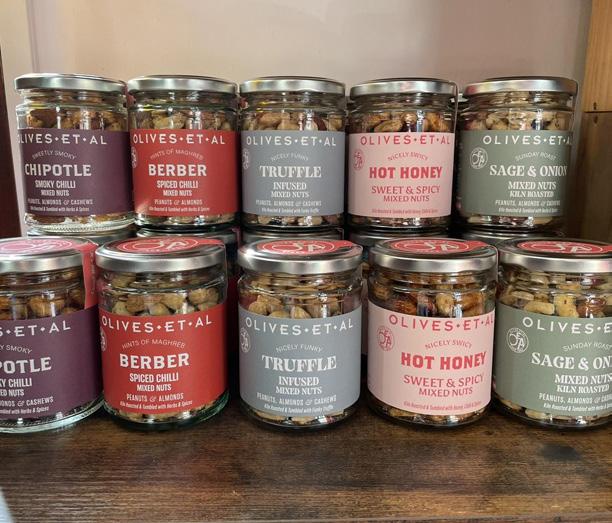

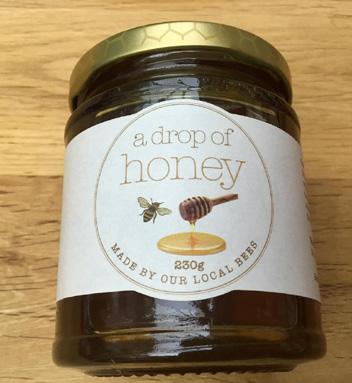


Holme Grange isn’t just a place to shop — it’s a celebration of creativity, connection, and the simple joy of slowing down to savour a season, a conversation, and a place where everyone feels at home.
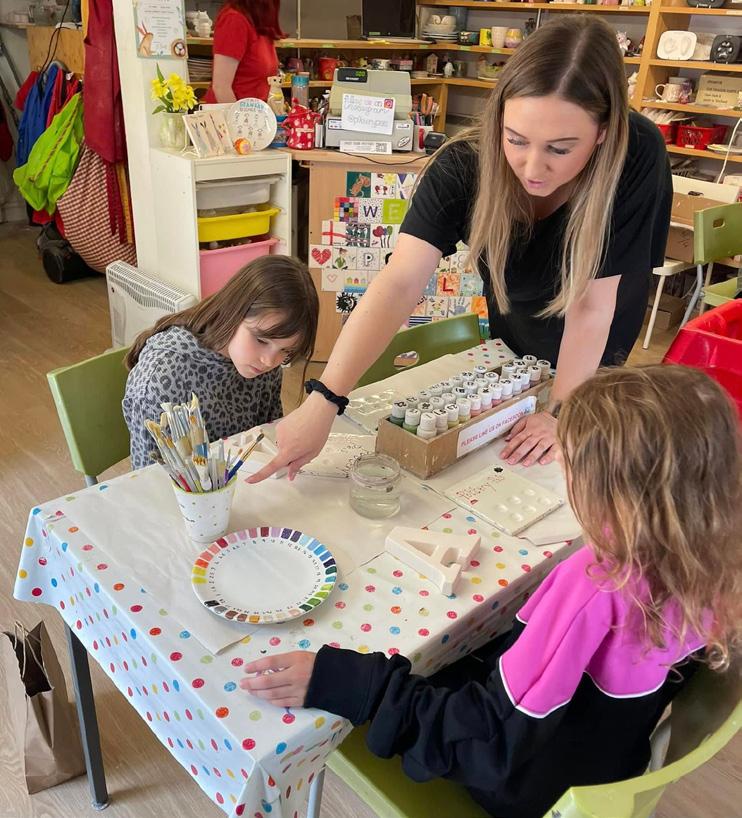

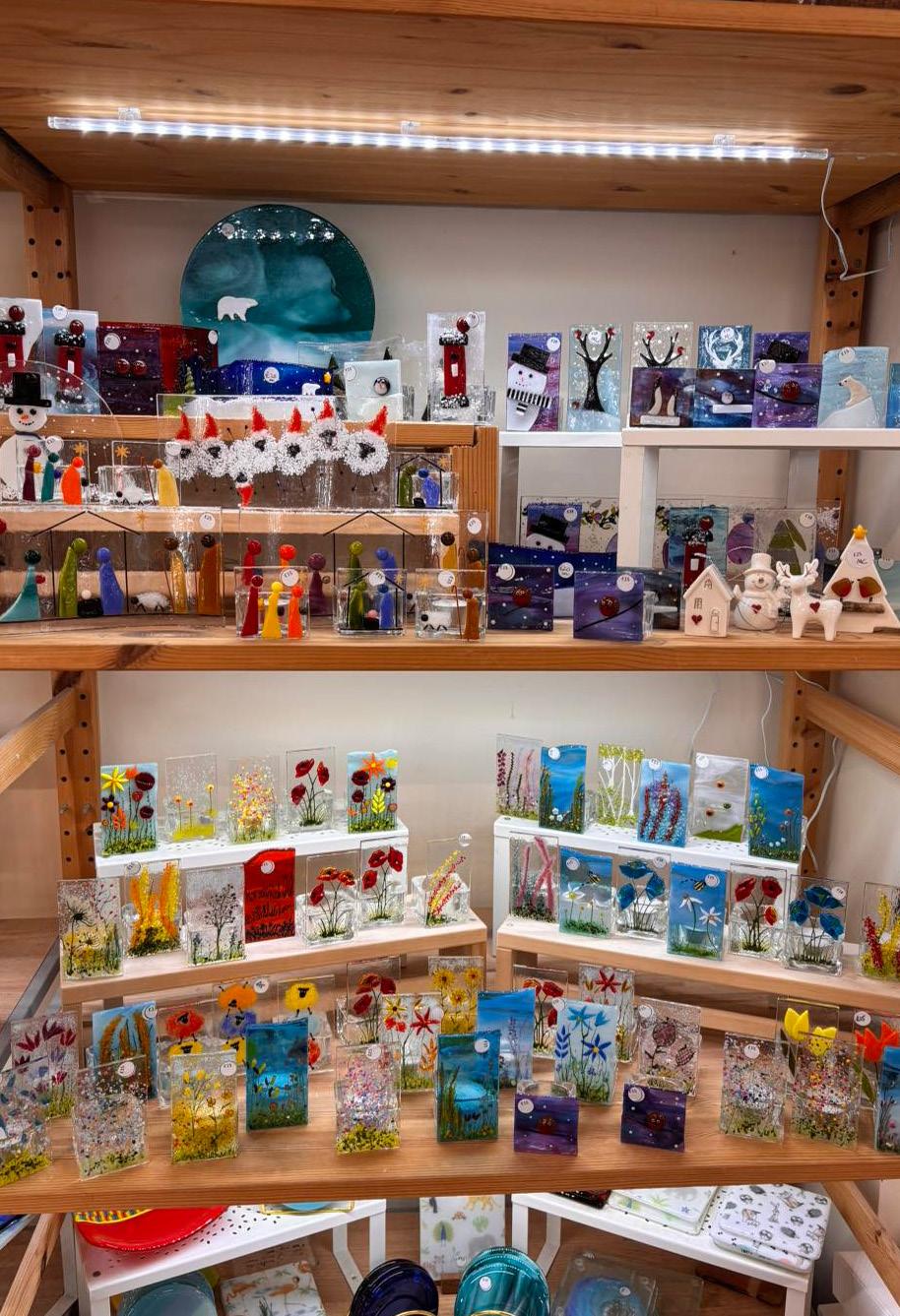

Holme Grange Craft Village is a hidden gem in the heart of the countryside, offering a unique shopping experience. With independent traders and artisan crafters working in a collection of converted barns, visitors can browse in a relaxed environment.
Offering a wide range of products, as well as numerous workshops and classes, there is also a fabulous coffee house in a historic barn opening onto a beautiful enclosed courtyard where you can sit and relax while you enjoy your refreshment.
With activities to keep the kids entertained and special events running throughout the year, Holme Grange really is a ‘destination’ waiting to be discovered.
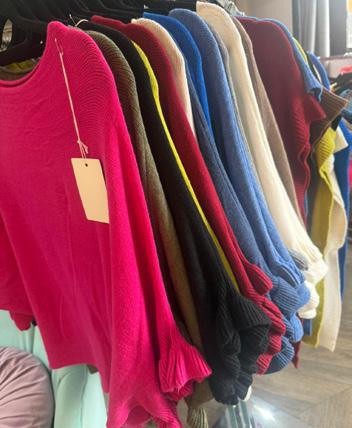

our website: holmegrangecraftvillage.co.uk
us in person:
Grange Craft Village, Heathlands Road, Wokingham, RG40 3AW
Pet Partners
How to Look After Different Pets at Home
Pets aren’t just animals—they’re teammates in everyday life. Whether it’s a dog who gets you moving, a cat who hogs your bed, or a hamster running marathons at midnight, pets add character, comfort, and chaos to a household. But here’s the deal: being a pet owner isn’t just about snapping cute photos for your socials. It’s about stepping up and making sure your pet’s needs come before your own convenience. Ready to be a proper pet partner? Let’s break it down.
Dogs – The Loyal Legends
Dogs are social butterflies and thrive on attention, exercise, and routine. Walks aren’t optional—they’re essential. Think of it as daily cardio, for both you and them. Keep mealtimes regular, and never underestimate the power of playtime (a game of tug can fix a bad mood in seconds).
Pro tip: Always keep fresh water nearby—dogs can overheat fast after exercise.


Cats – The Chill Roommates
Cats act independent, but they notice everything. They need scratching posts (unless you’re cool with shredded furniture), clean litter trays, and cosy napping spots. Grooming is important too, especially if your cat has long fur.
Did you know? Cats purr not only when they’re happy but also when they’re trying to self-soothe.
Rabbits – Quiet but Quirky
Rabbits aren’t cage decorations—they’re active, social, and need space to explore. Hay is their main food, and it also keeps their teeth in check. Veggies are a nice bonus, but sweets (even fruit in big amounts) aren’t great for them.
Tip: Rabbits often prefer having a buddy, so consider keeping them in pairs.
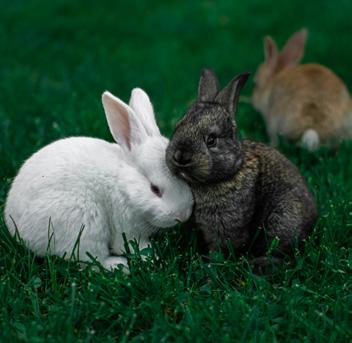

Hamsters – Small but Mighty
Hamsters are basically night owls. They’ll run, chew, and explore while you’re asleep, so don’t expect midnight peace. Give them tunnels and wheels for exercise, and handle them gently so they get used to you.
Heads-up: Most hamsters prefer to live alone— they’re tiny but territorial.
Fish – Calm Vibes Only
Fish tanks are like living art, but they still take effort. Clean water is key, and filters are non-negotiable. Overfeeding is a rookie mistake—too much food harms both the fish and the tank.
Fact check: Goldfish don’t have three-second memories. They can remember patterns for months!

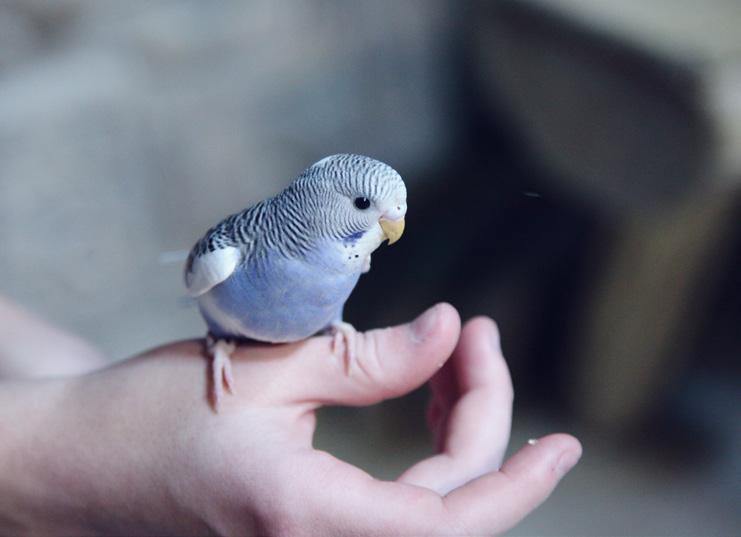
Birds – Feathered Characters
From chatty budgies to whistling cockatiels, birds bring colour and sound to your life. They need roomy cages, perches, and toys to avoid boredom. Many birds love attention—some can even learn tricks or words.
Reminder: Birds should stretch their wings outside the cage in a safe space.
Reptiles – The Exotic Option
Lizards, snakes, and turtles are fascinating but highmaintenance. They usually need heated lamps, carefully controlled environments, and specialised diets. They’re not a “buy and forget” pet, so research is crucial.


The Big Picture
Being a pet partner is about commitment. Pets can’t tell you when they’re hungry, bored, or unwell in words—they rely on your attention. In return, you get unconditional loyalty, daily laughs, and a bond like no other.
So whether you’re walking the dog, refilling the hamster’s water, or scooping out the fish tank, remember: it’s the small, consistent actions that make you a great pet partner. And honestly? There’s nothing cooler than being the person your pet completely trusts.
5 Things You Should Never Feed Your Pet
Chocolate – toxic for dogs and cats.
Grapes & raisins – can damage dogs’ kidneys.
Onions & garlic – dangerous for many animals.
Avocado – not safe for birds or rabbits.
Human junk food – salty crisps, sweets, and fast food are a no-go.
Rule of thumb: If you’re not 100% sure, don’t share your snack.

Signs Your Pet Might Be Bored
Pets can’t say “I’m bored,” but they show it in funny (and sometimes destructive) ways. Watch out for:
Dogs chewing shoes or digging in the garden.
Cats attacking curtains or pacing the room.
Rabbits biting cage bars or digging obsessively.
Birds plucking their own feathers.
Hamsters gnawing constantly without stopping.
Fix it: Add more toys, create a play area, or spend extra time interacting with them.
How Much Time Do Pets Really Take?
Dog – 1–2 hours of walks and play daily.
Cat – 20–30 minutes of play, plus litter box duty.
Rabbit – daily feeding, cage cleaning, and at least an hour of safe playtime.
Hamster – short handling sessions, cage cleaning weekly.
Fish – 10 minutes a day feeding, plus water checks.
Bird – several short play/interaction sessions daily.
Reptiles – depends on the species, but expect daily tank checks and regular feeding.
Owning a pet is like having a part-time job—you need to show up consistently.

Caring for pets is more than a hobby—it’s a lifelong promise. Whether you’ve got a dog waiting by the door, a cat claiming your pillow, or a hamster powering through the night, every pet depends on you for love, safety, and consistency.
The little things—fresh water, clean bedding, daily play—add up to a big difference in their happiness. When you step up as a responsible pet partner, you don’t just keep your animal healthy; you also build an unbreakable bond. In return, pets give you loyalty, laughter, and a kind of friendship that lasts a lifetime.

Independent and friendly rural practice in Berkshire. Now offering surgical and dermatology referrals to clients from other practices.


Wild Connections
Animals of India and Berkshire
by Priya Kavanagh
If you stop for a moment and listen — really listen — you might be surprised by what you hear. The distant call of a peacock across an Indian courtyard, or the rustle of a hedgehog in a Berkshire garden. Thousands of miles apart, these places couldn’t seem more different — yet their animals tell stories that bring them beautifully together.
Life Shared with Wildlife
Both India and Berkshire share something quietly special: an instinctive closeness between people and animals. In India, cows wander freely through bustling streets, monkeys perch on temple walls, and elephants march proudly in parades. Wildlife isn’t hidden away — it’s part of daily life, woven into the rhythm of communities.
Meanwhile in Berkshire, life takes a gentler but no less meaningful form. Red kites circle elegantly above open fields, deer step carefully through the mists of Windsor Great Park, and foxes trot confidently through towns at dusk. Just as in India, wildlife here has learned to thrive alongside humanity — adapting, surviving, and occasionally stealing the spotlight.


Symbols of Grace and Heritage
Across both regions, certain animals carry deeper meaning. In India, the elephant is more than a creature of great beauty and strength — it’s a symbol of wisdom and good fortune, revered in temples and celebrated during festivals. The peacock, too, dazzles with colour and pride, much like the country itself.
Berkshire has its own emblems of heritage. The swans of the River Thames, protected by royal decree, glide serenely through centuries of history. They mirror the grace of India’s peacocks — creatures admired not just for their beauty but for their symbolism of dignity and peace. It seems that wherever you are in the world, animals have a way of reflecting the character of their surroundings.
Conservation and Care
Yet both places face the same modern challenge: how to preserve this delicate relationship between nature and people. In India, dedicated sanctuaries protect the Bengal tiger, elephants, and rhinos — a vital step in safeguarding species once on the brink. Conservationists work tirelessly, balancing the needs of communities with the survival of iconic wildlife.
In Berkshire, the mission is closer to home but just as important. Wildlife trusts nurture hedgerows, protect wetlands, and campaign to bring back species like the hedgehog and barn owl. Rewilding projects are breathing life back into forgotten corners of countryside, proving that even in a small, well-loved county, there’s room for nature to flourish.
Both regions show that conservation isn’t only about rare species or distant jungles — it’s about respect, awareness, and the small daily choices that let wildlife coexist with people.

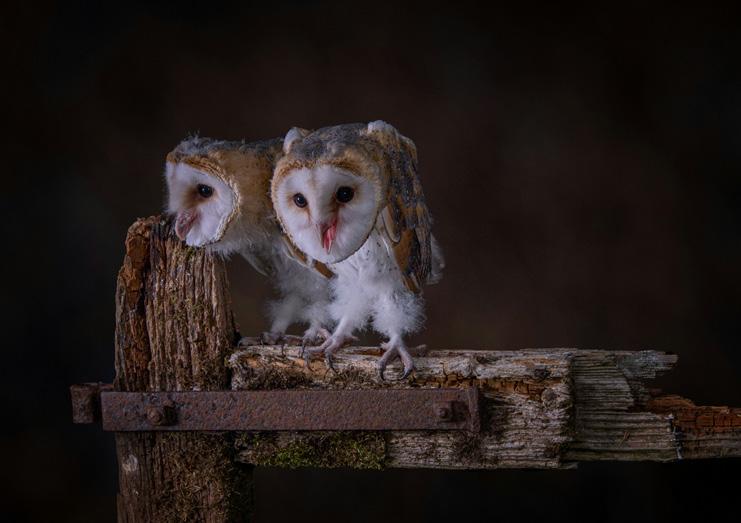
Moments of Everyday Wonder
There’s also the simple joy of animal encounters — moments that stay with us. In India, the flash of a kingfisher over a river or the chatter of green parakeets at dawn can be as breathtaking as any safari sighting. In Berkshire, a robin landing nearby during a winter walk or the sudden burst of deer across a meadow can lift the heart in exactly the same way.
No matter where we are, animals have the power to slow us down and remind us of something timeless — that nature doesn’t need to be grand to be magical.
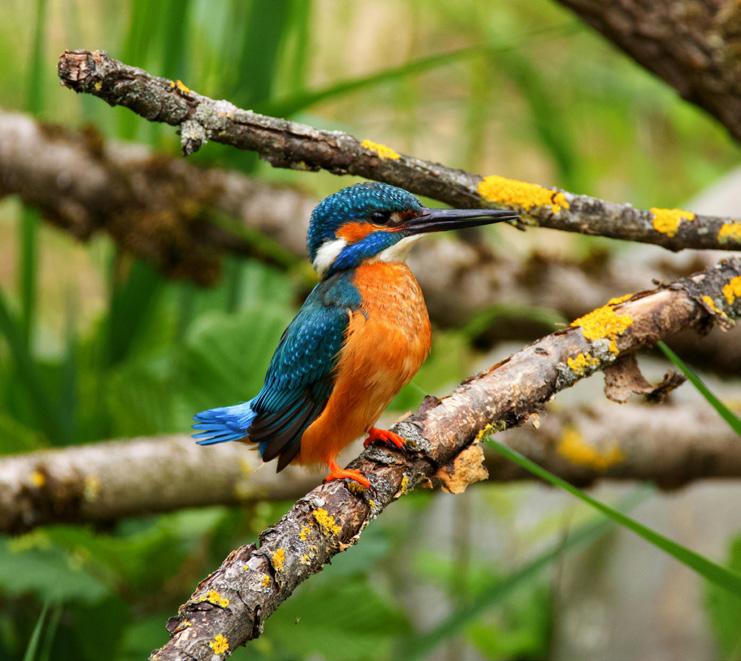
A Shared Message
In the end, the animals of India and Berkshire share more than geography could ever divide. They invite us to live with gentleness, to protect what we love, and to appreciate the quiet, everyday miracles that nature offers.
From sacred cows to garden hedgehogs, from majestic elephants to elegant swans — the message is the same: we share this world, and our wellbeing is tied to the creatures we live beside. Wherever we find them, animals remind us that kindness, respect, and wonder truly have no borders.
Diwali in Berkshire
A Festival of Light, Community and Connection
by Jacqui Priestley

As the nights draw in and autumn leaves carpet the ground, something magical begins to glow — the festival of Diwali. Known as the Festival of Lights, Diwali symbolises the triumph of light over darkness, knowledge over ignorance, and hope over despair. But in Berkshire, it’s much more than a religious or cultural celebration; it’s a moment that brings together people of all ages, backgrounds, and beliefs in a shared spirit of joy, kindness, and connection.
In local schools, Diwali has become a highlight of the autumn term. Teachers and pupils alike embrace the opportunity to learn about its traditions and meaning. Classrooms are transformed with colourful rangoli patterns, hand-made lanterns, and the sweet scent of incense or spiced treats. Children eagerly share stories of how their families celebrate at home — lighting diyas, wearing new clothes, or enjoying a feast of samosas and sweets.

For many pupils, it’s also a chance to proudly share their heritage, while for others it’s a beautiful introduction to the idea of celebrating diversity. School assemblies often feature dance performances, storytelling, and music — creating a joyful atmosphere that helps young people appreciate the richness of different cultures.

For the wider community, Diwali is a time of togetherness that extends far beyond cultural boundaries. In towns like Reading, Slough, and Wokingham, local councils and community centres host Diwali fairs and light festivals that bring thousands of people together. Streets come alive with music and food stalls, while parks and community halls sparkle with lanterns and decorations.


There’s something deeply uplifting about seeing families, friends, and neighbours — from all walks of life — sharing laughter over plates of fragrant curries or admiring fireworks lighting up the evening sky.
These gatherings aren’t just about celebration; they’re about connection. Diwali encourages everyone to open their hearts, share kindness, and take time to appreciate the good in their lives. Many community groups in Berkshire use the festival as an opportunity to give back — organising charity events, food donations, and outreach for those in need. It’s a time when generosity shines brightest, reminding us that light doesn’t just come from candles or fireworks, but from compassion.

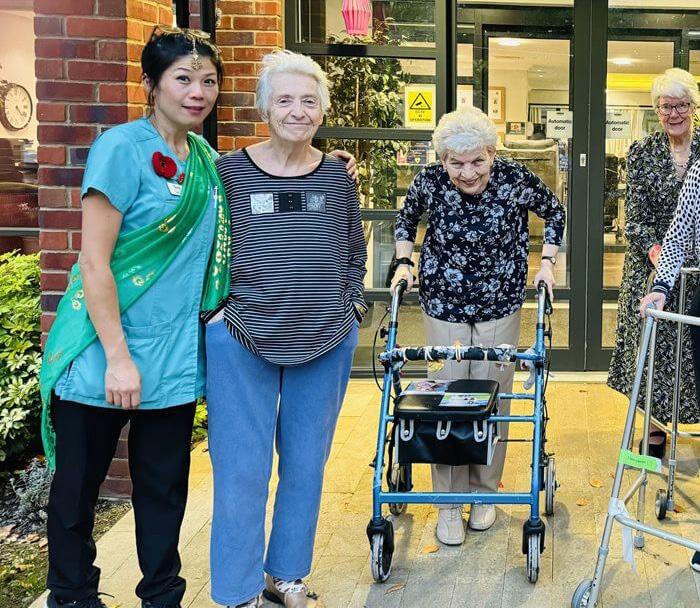
For older residents and those living in care homes, Diwali brings warmth in more ways than one. Many care homes across Berkshire mark the festival with music, crafts, and shared meals — sometimes with the help of visiting schoolchildren or local volunteers.


The laughter and colour of these visits often stir fond memories for older people who once celebrated Diwali with their families, while introducing others to its beauty for the first time. There’s something very special about seeing generations come together, lighting candles side by side, and sharing stories over cups of chai. These small moments create a sense of belonging that lasts long after the lights have dimmed.
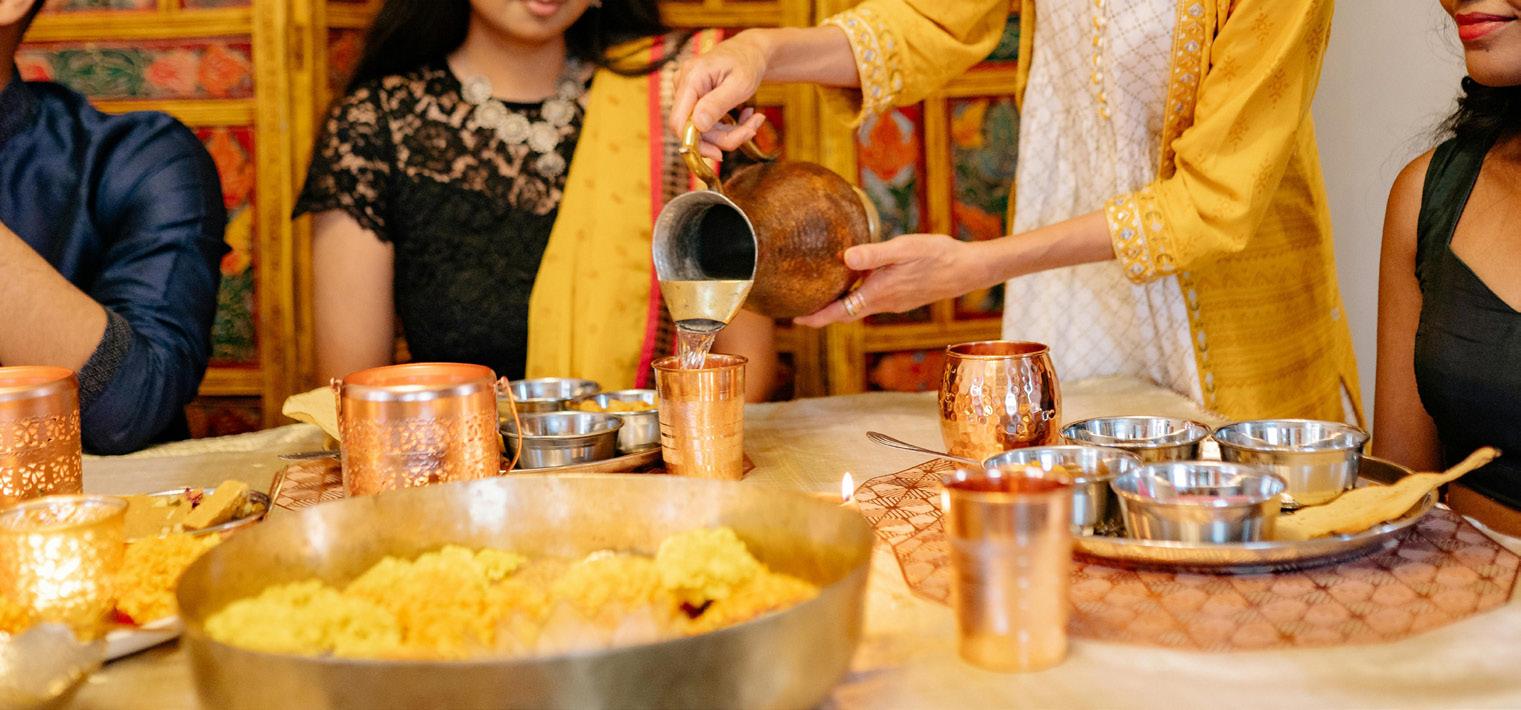



For many people living away from family, especially the elderly or those new to the area, Diwali can also offer a sense of comfort and community. Churches, temples, and cultural centres open their doors to all, offering a place to celebrate and connect. In a world where loneliness can cast long shadows, Diwali’s message, that even the smallest light can drive away darkness, feels particularly meaningful.
What makes Diwali in Berkshire truly special is its inclusivity. Whether you’re lighting candles for Lakshmi, attending a community concert, or simply admiring your neighbour’s decorations, the festival has a way of drawing people closer. It’s a time when barriers seem to melt away, replaced by warmth, curiosity, and friendship.
As fireworks sparkle across the night sky and the air hums with laughter and celebration, it’s easy to see why Diwali holds such an important place in Berkshire’s community life. It’s a reminder that light isn’t just something we see — it’s something we share.
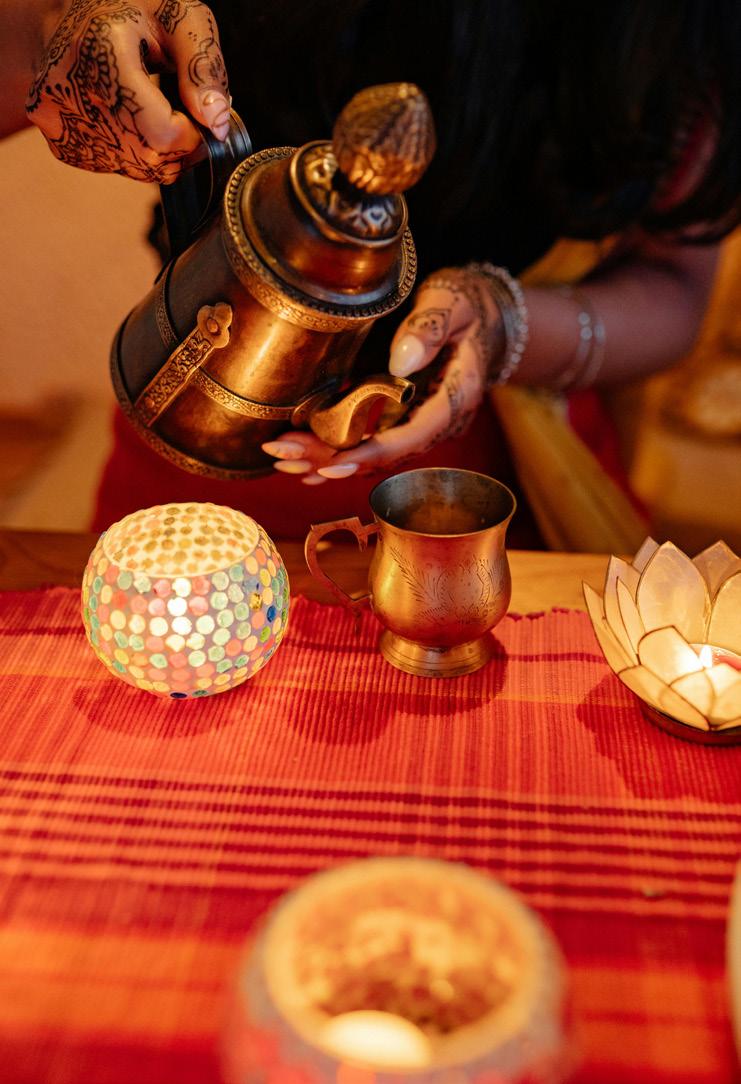

From school classrooms to care homes, from bustling high streets to quiet living rooms, Diwali brings a glow that unites generations and backgrounds in a single, beautiful message: that even in uncertain times, hope, love, and kindness will always find their way through.

In Berkshire, Diwali isn’t just a festival — it’s a feeling. A moment when the county comes together to celebrate light, life, and one another. And in that shared glow, every candle tells the same story — that the light within us all shines brightest when we share it.

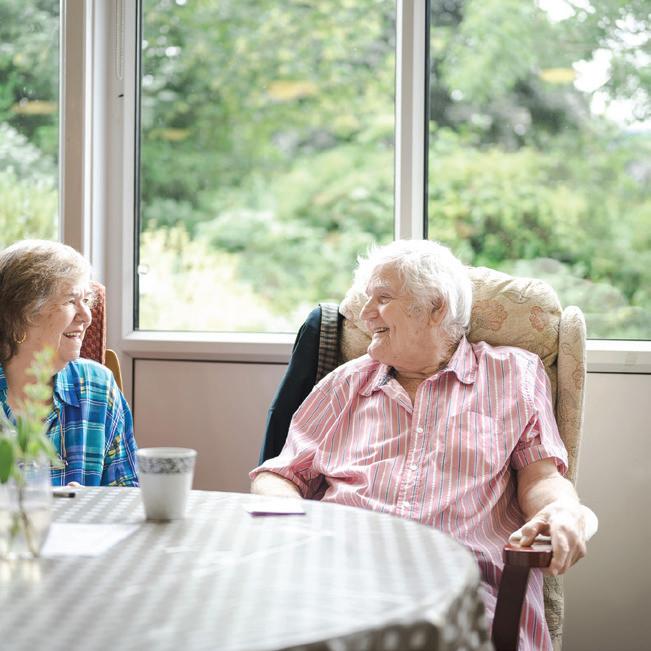

Delicious Diwali
Traditional Treats You Can Make at Home
Diwali, the Festival of Lights, is one of the most joyful and colourful celebrations of the year, and nothing captures its spirit quite like the food. Across homes in India and beyond, kitchens come alive with the scent of spices, the sweetness of ghee & cardamom, and the sound of laughter as families cook together. It’s a time for sharing, not just sweets and savouries, but also love, stories, and traditions passed down through generations.
Creating Diwali food at home is a beautiful way to connect with this festive spirit. The best part? Many classic dishes are simple to make with ingredients you likely already have in your kitchen. From melt-in-your-mouth sweets to crispy, savoury bites, here’s how you can bring authentic Diwali flavours to your table — including two delicious recipes to try yourself.
Sweet Beginnings: The Magic of Mithai
No Diwali celebration is complete without mithai, the traditional sweets that symbolise prosperity and happiness. Among the easiest to make are ladoo — small, round balls of sweetness made from roasted gram flour, coconut, or semolina.
Besan ladoo, for instance, is made by gently roasting chickpea flour in ghee until it releases a nutty aroma, then mixing in powdered sugar and cardamom before shaping into balls.
Another much-loved sweet is barfi, a fudge-like confection that can be made from milk, nuts, or coconut. Kaju katli (cashew barfi) and pista barfi (pistachio) are festival favourites, often adorned with edible silver leaf for that touch of sparkle.
But if there’s one sweet that never fails to delight, it’s Gulab Jamun — soft, syrupsoaked dumplings that are rich, fragrant, and wonderfully indulgent.

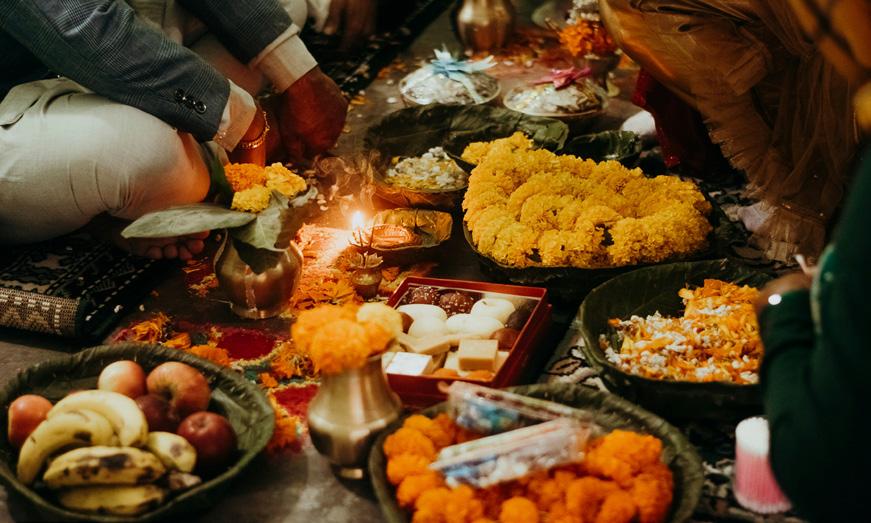
Ingredients
1 cup milk powder
¼ cup plain flour
¼ tsp baking soda
2 tbsp ghee
2–3 tbsp milk (or as needed to make dough)
Oil or ghee for frying
For the syrup
1½ cups sugar
1½ cups water
4 green cardamoms, crushed
A few drops of rose water (optional)
Method
Start by making the syrup: combine sugar, water, and cardamom in a pan. Bring to a gentle boil and simmer for 8–10 minutes until slightly sticky. Add rose water if using and set aside to keep warm.
In a mixing bowl, combine milk powder, flour, baking soda, and ghee. Add milk little by little to form a soft, smooth dough — it should be pliable but not sticky.
Divide the dough into small balls with no cracks (around marble size).
Heat oil or ghee in a deep pan over low heat. Fry the balls slowly, stirring gently, until they turn golden brown.
Remove and immediately immerse them in warm syrup. Let them soak for at least 30 minutes before serving.
Soft, syrupy, and irresistible, gulab jamuns taste best when served slightly warm with a sprinkle of chopped pistachios.

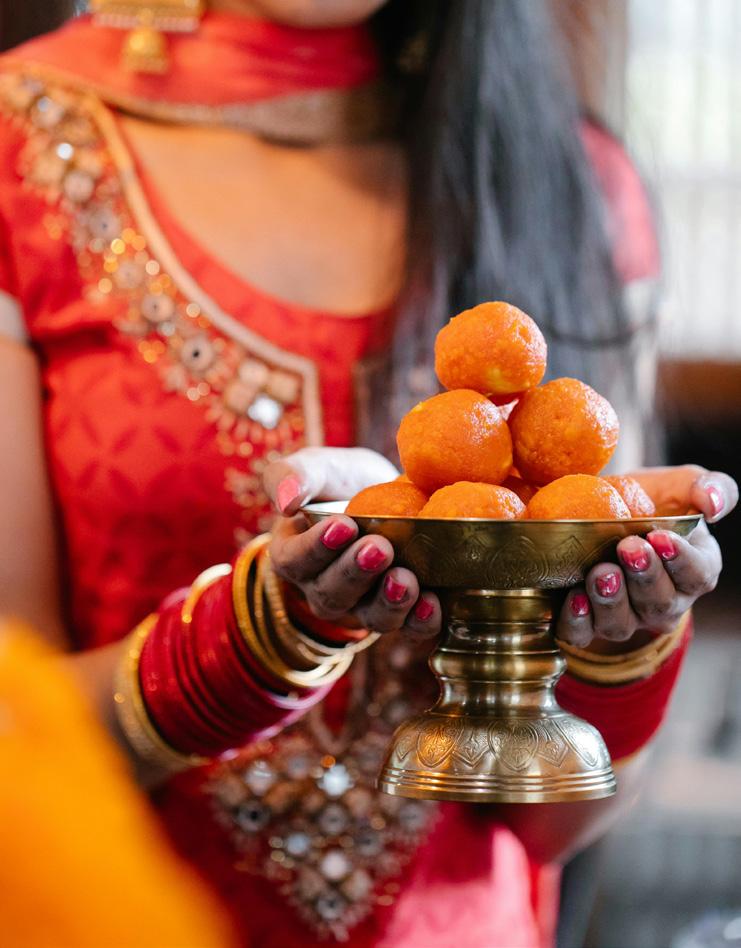
Savoury Sides: Spices and Crunch
Diwali food isn’t just about sweets — it’s also about savoury snacks that balance the sweetness with spice and crunch. Chivda (a spiced snack mix made with puffed rice, nuts, and curry leaves) and mathri (crispy, salted crackers) are staples that keep well and are ideal for guests.
And then there are samosas — golden triangles of pastry filled with spiced potatoes and peas. Whether fried or baked, they’re the perfect party bite and always a crowd favourite.
Recipe: Crispy Potato Samosas
Ingredients (12 samosas)
1 cup milk powder
¼ cup plain flour
¼ tsp baking soda
2 tbsp ghee
2–3 tbsp milk (or as needed to make dough)
Oil or ghee for frying
For the filling
3 large potatoes, boiled and diced
½ cup peas
1 tbsp oil
1 tsp cumin seeds
1 tsp grated ginger
1 green chilli, finely chopped (optional)
½ tsp turmeric powder
½ tsp garam masala
1 tsp coriander powder
Salt to taste
Fresh coriander, chopped
Method
In a bowl, mix flour, salt, and oil. Rub together until crumbly, then add water gradually to form a firm dough. Cover and let rest for 30 minutes.
For the filling, heat oil in a pan. Add cumin seeds, ginger, and chilli. Stir for 30 seconds, then add peas, potatoes, and spices. Mix well and cook for 5 minutes. Stir in chopped coriander and cool.
Divide the dough into balls and roll each into a thin oval. Cut in half to form two semi-circles.
Shape each semi-circle into a cone, seal the edge with a little water, and fill with the potato mixture. Press the edges together to close.
Heat oil in a pan and fry the samosas on medium
heat until golden brown and crisp.
Serve with mint chutney or sweet tamarind sauce — and watch them disappear faster than you can make them!

Bringing It All Together
To complete your Diwali feast, serve your homemade sweets and savouries alongside main dishes like paneer butter masala, chole (spiced chickpeas), or fragrant vegetable pulao. Pair them with warm naan or poori, and end the meal with a cooling mango lassi or a cup of masala chai.
The true essence of Diwali cooking isn’t perfection — it’s participation. The laughter while shaping ladoos, the aroma of spices wafting through the kitchen, the shared plates, and the stories — that’s what makes the food so special. Whether you’re celebrating with family, friends, or neighbours, every dish you make adds a little more light to the festival.
So roll up your sleeves, light those lamps, and let your kitchen glow with the joy of homemade Diwali delights.
Step Into 2025 with Pratts Pods and Windows 11

If your computer feels a little… stuck in the past, Windows 11’s 2025 update is here to give it a fresh lease of life. The 25H2 update is all about sleek design, smarter multitasking, and tools that make your day run just a little smoother. The first thing you’ll notice is the modern look: a centered Start menu, rounded corners, and a cleaner taskbar give your desktop a fresh, cohesive feel. Snap Layouts, Snap Groups, and enhanced virtual desktops mean juggling work, hobbies, or school projects has never been easier.

A standout addition is Copilot, Microsoft’s AI assistant (pictured right). It can summarise documents, generate content, and offer handy guidance, turning your PC into a more intuitive, responsive helper. Security is tighter too, with AI-assisted secure coding, removal of old tools, and Quick Machine Recovery, which automatically fixes boot issues before they become a headache.
File Explorer has had a makeover, too, with clearer menus, faster performance, and AI-powered actions. And if the idea of installing it yourself feels daunting, Pratts Pods in Wokingham and also in Henley on Thames has you covered. Their team will install Windows 11 safely, back up your files, and show you how to make the most of the new features — no tech stress required.
Whether you want style, productivity, or smarter computing, Windows 11 2025 is polished, intuitive, and ready to transform your day-to-day — and Pratts Pods make getting there effortless.


Whether you want style, productivity, or smarter computing, Windows 11 2025 is polished, intuitive, and ready to transform your day-to-day — and Pratts Pods make getting there effortless.

Pratts Pods in Wokingham is your local hub for tech solutions, offering a unique blend of personalised service and practical expertise. Specialising in computer installations, upgrades, and software solutions, they make technology simple and accessible for everyone—from home users to small businesses. They also provide expert support for mobile phones, including setup, repairs, and advice to keep them running smoothly.
With a friendly, approachable team, Pratts Pods doesn’t just provide services; they offer guidance, support, and tailored advice to ensure your devices run smoothly. Whether you need help setting up a new system, transferring data, or optimising performance, Pratts Pods combines technical knowhow with a personal touch, making them a trusted choice in Wokingham and Henley.


Got a tech issue, or need honest advice?
Pop into Pratts Pods, your local hub for repairs, upgrades, and all things tech:
Unit 13 Elms Walk, Wokingham RG40 2FE 0118 304 7777 and 41 Station Road, Henley-On-Thames RG9 1AT 01491 917 820
Mon-Fri: 09:00–17:30 Sat: 10:00-15:00 www.prattspods.co.uk

W OK I N G H A M
W I N T ER C A R N I VA L


S U N DAY 3 0 T H NO V E M B ER 2 0 2 5


O v e r 1 4 0 S t a l l s ❆ F o o d & D r i n k F a i r g r o u n d R i d e s
S t re e t E n t e r t a i n m e n t
S a n t a ’ s G r o t to ❆ M us i c ❆ C a r o l s
To w n T re e S w i t c h - O n ❆ G r a n d F i n a l e

Wokingham Town Council Supported By













L i C l b f



O i b h e



Wo k i n g h a m








It’s April 2003. Army Major Charles Ingram, his wife and his coughing accomplice are convicted of cheating on the most popular gameshow in the country: ‘Who Wants to be a Millionaire?’ Ingram was given an 18-month suspended sentence after winning the £1 million jackpot, although he has always denied he cheated. The country was gripped by the sheer audacity of the crime and the evidence was damning. Or was it?
James Graham’s provocative and funny play will make you, the audience, question your own concepts of truth and reality. New evidence is brought forward and the audience interaction with the play adds to the tension as you are invited to ‘all vote now’ on your keypads to judge the accused guilty or not.

SHOW TIMES: 13th to 15th & 17th to 22nd November at 19:30 Matinee at 14:00 on Saturday 15th
A Pre-Christmas Visit to Windsor Castle
A visit to Windsor Castle just before Christmas is an unforgettable experience. The world’s oldest and largest occupied castle feels even more majestic in winter, with its towers outlined against frosty skies and the cobbled streets below alive with festive spirit.

As you approach through Windsor town centre, you’ll find boutique shops, cosy cafés, and the scent of roasted chestnuts in the air. Step inside the Castle, and the atmosphere becomes truly magical.
The State Apartments are beautifully decorated with grand Christmas trees from Windsor Great Park, twinkling lights, and glittering ornaments that fill the rooms with warmth and sparkle.
Don’t miss the Semi-State Rooms, still used by the Royal Family for official entertaining during the festive season. The intricate decorations, fine art, and royal traditions on display offer a fascinating glimpse into
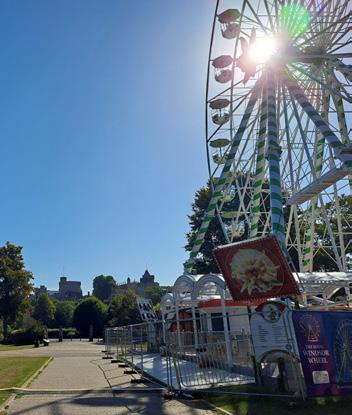
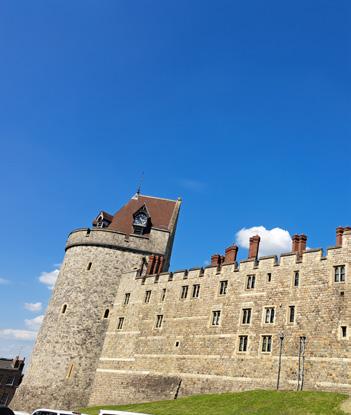

centuries of Christmas celebrations.
After exploring the Castle, stroll through the town to enjoy the Windsor Christmas Market, where you can shop for artisan gifts, sip hot chocolate, and listen to live carols under the Castle’s illuminated walls. A walk along the Long Walk or the River Thames offers stunning views and photo opportunities, especially at sunset.
Windsor at Christmas is the perfect blend of history, heritage, and holiday cheer—an enchanting day out that captures the very best of royal Britain in festive style.

Cornwall A Special Kind of Happiness
by Jacqui Priestley
There are some places in the world that immediately take your breath away — where the beauty seems to appear around every corner, and you find yourself saying “wow” more times than you can count. Cornwall was exactly that for me. My first visit left me in quiet awe — the kind of awe that makes you slow down, breathe deeply, and realise you’re somewhere truly special.
I began my Cornish adventure in Newquay, a place I’d always associated with surfboards, golden beaches, and dramatic cliffs. It did not disappoint. The moment I caught sight of Fistral Beach, with its wide arc of sand framed by rugged headlands, I understood why so many artists, photographers and free spirits fall in love with this part of the world. The Atlantic roared with confidence, rolling in shades of turquoise and deep indigo, and the salty air carried a freshness that seemed to reset my entire mind.



Walking along the coastal path, I was met by views so vivid they almost didn’t seem real — wildflowers edging the cliffs, sea birds circling lazily overhead, and the rhythmic crash of waves far below. There’s something profoundly humbling about standing at the edge of a land shaped for centuries by wind and tide. It reminded me that nature will always be the finest artist of all.
After a morning of exploring, hunger led me into the heart of Newquay town where I did what any visitor must do — I tried my first Cornish pasty. Golden, crimped, and warm from the oven, it was everything I’d hoped for: buttery pastry filled with tender beef, potatoes, swede, and onion. Simple, hearty, and full of local character, it felt like the perfect introduction to Cornwall’s culinary soul. Sitting on a bench overlooking the sea, pasty in hand, I felt like I was living a postcard moment.

From Newquay, I drove north along the coast towards Padstow, winding through lanes lined with hedgerows that burst with late-summer colour. Padstow, with its charming harbour and gentle hum of life, felt immediately welcoming. Fishing boats bobbed on the tide, their reflections rippling in the water like strokes from an artist’s brush. Seagulls called out overhead, and there was that unmistakable scent of salt, seaweed, and freshly cooked seafood that made my stomach rumble all over again.

Before indulging, though, I wanted to explore the famous Camel Trail — a cycling and walking route that follows the old railway line between Padstow and Bodmin. I hired a bike and set off, the path meandering along the River Camel estuary. It was utterly peaceful — a perfect blend of nature, history, and light adventure.
The water sparkled under the afternoon sun, and I found myself stopping often just to take it all in: the herons standing motionless in the shallows, the rustle of leaves in the hedgerows, and the occasional burst of laughter from fellow cyclists passing by.


Traditional Cornish Pasty Recipe
Here’s a traditional Cornish pasty recipe; hearty, simple, and just as you’d find in a proper Cornish bakery!
It serves 4, takes 30 minutes to prep, 50 to cook, and can be enjoyed warm or cold.
Ingredients
For the pastry:
500g plain flour
250g cold unsalted butter or lard (or half of each)
1 tsp salt
6–8 tbsp cold water
For the filling:
350g beef skirt or chuck steak, finely diced (skirt is traditional)
300g potatoes, peeled and diced into small cubes
175g swede (turnip in Cornwall), peeled and diced
1 medium onion, finely chopped
Salt and freshly ground black pepper, generous amounts
A small knob of butter (optional, for extra richness)
To finish:
1 egg, beaten (for glazing)
Method
Make the pastry:
Mix the flour and salt in a bowl. Rub in the butter (or lard) until it resembles breadcrumbs. Gradually add the cold water, a tablespoon at a time, until the dough comes together. Knead lightly, wrap in cling film, and chill for at least 30 minutes.
Prepare the filling:
Combine the diced beef, potato, swede, and onion in a bowl. Season generously with salt and pepper — this is key to the authentic flavour.
Assemble the pasties:
Divide the dough into 4 equal pieces.
Roll each one into a circle about 20cm (8 inches) across.
Pile the filling into the centre of each round, dot with a little butter if using.
Dampen the pastry edges with water, fold over to form a D-shape, and press the edges together firmly.
Crimp the edge by twisting it over itself along the curve to seal (this is the famous Cornish crimp!).
Bake:
Place on a lined baking tray, brush with beaten egg, and bake at 180°C (160°C fan) for 50–60 minutes, until golden brown.

There’s a special kind of happiness that comes from simple pleasures like that — pedalling through countryside so unspoiled, feeling the sun on your face, and knowing there’s no rush to be anywhere. Cornwall seems to have mastered the art of slowing time just enough for you to truly enjoy it.
By early evening, I was ready for something delicious, and where better to end the day than Rick Stein’s restaurant in Padstow? The setting was relaxed yet refined, with a front-row view of the harbour as the sun began to dip low.
I ordered the famous lobster roll, and from the first bite, I knew it was something special. The lobster was perfectly sweet and tender, tucked inside a buttery brioche bun with a delicate hint of lemon and herbs. It was luxurious without being pretentious — a dish that captured the essence of the sea, prepared with genuine respect for its ingredients.

As I sat there, watching the boats sway gently and the sky turn shades of gold and pink, I realised that Cornwall had completely won me over. It wasn’t just the scenery, though that alone was magnificent. It was the feeling of the place — the laid-back charm, the authenticity, the way it seemed to invite you to breathe a little deeper and smile a little wider.
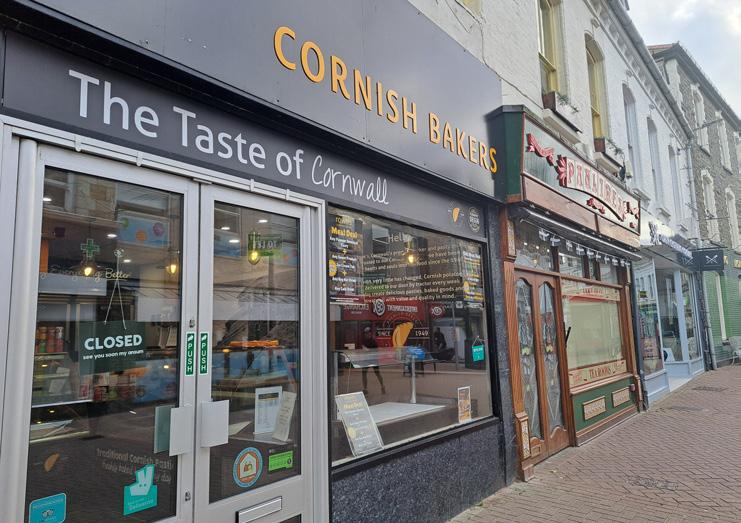
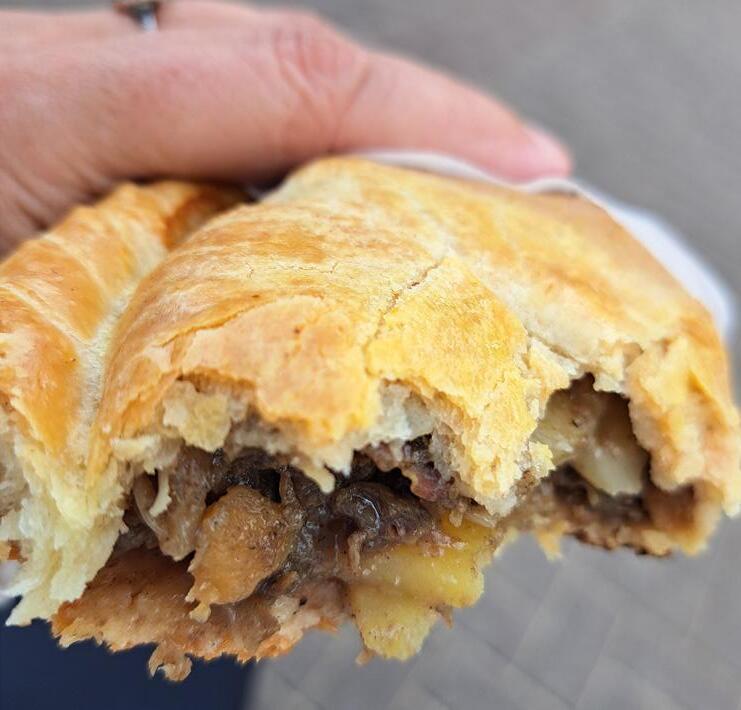
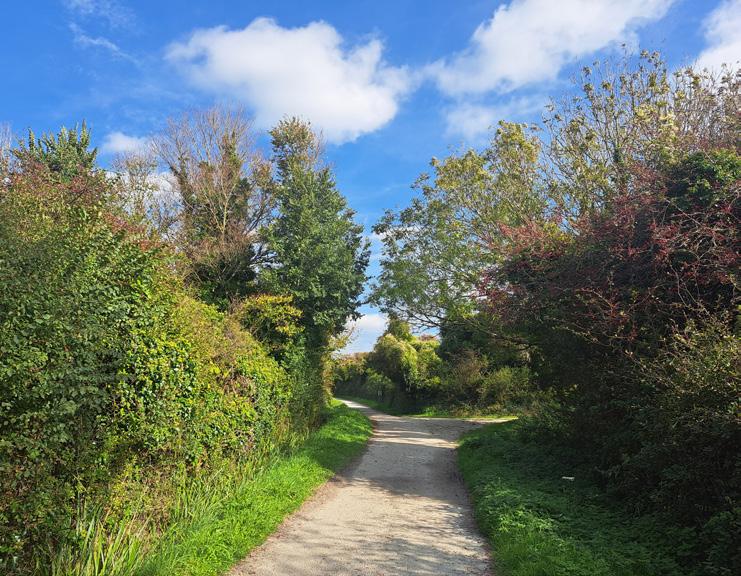
On the drive back, the coastal horizon glowed in the fading light, and I found myself already planning a return trip. There was still so much to see — St Ives, Tintagel, Land’s End — but more than anything, I wanted to return to that sense of calm wonder that Cornwall had gifted me.


My first visit to Cornwall was more than a holiday; it was a reminder of the beauty that still exists so close to home. From Newquay’s wild waves to Padstow’s gentle harbour, from the warmth of a Cornish pasty to the luxury of a lobster roll, every moment felt like a little piece of magic.
And as I crossed the border back towards home, one thought stayed with me — sometimes, it’s not just the scenery that takes your breath away, but the way a place makes you feel.

Celebrate Autumn’s Beauty
In Orange
Orange has long been associated with warmth, energy, and comfort, which is why it naturally becomes the colour of choice for home interiors during autumn. As the seasons shift and the days grow shorter, people instinctively look for ways to create a sense of cosiness indoors.
Orange captures the very essence of autumn: the glow of turning leaves, the richness of pumpkins, and the warmth of a crackling fire. It bridges the gap between the vibrancy of summer and the calm, reflective tones of winter, making it an ideal transitional colour for this time of year.
Psychologically, orange is uplifting and welcoming. It encourages enthusiasm, positivity, and togetherness, making it perfect for dining rooms, kitchens, and living spaces where people gather. Unlike red, which can be overpowering, or yellow, which may lack depth, orange offers a balance—energetic yet grounding.
outdoors, connecting the home environment to the landscape. Orange cushions, throws, or ceramics echo autumn leaves and harvest produce, while copper and brass accents enhance the seasonal glow.

From a design perspective, orange works beautifully with the seasonal palette. Shades of burnt orange, rust, terracotta, and amber mirror the natural changes
Orange also pairs seamlessly with other autumnal shades—deep browns, forest greens, warm neutrals, and mustard yellows—creating interiors that feel layered and inviting. Terracotta walls with cream furnishings or orangetoned upholstery with wood and earthy ceramics showcase its versatility.
Symbolically, orange is tied to autumn traditions. It represents abundance and harvest, echoing pumpkins, squash, and spices that dominate seasonal food and celebrations. More than a style choice, it reflects rituals like Halloween and Thanksgiving,

where the colour naturally takes centre stage.
Ultimately, orange is the colour of autumn interiors because it embodies the mood of the season. It provides warmth against cooling weather, vibrancy as the year winds down, and comfort in the spaces where we spend the most time. Whether bold or subtle, orange transforms homes into havens that celebrate autumn’s beauty.

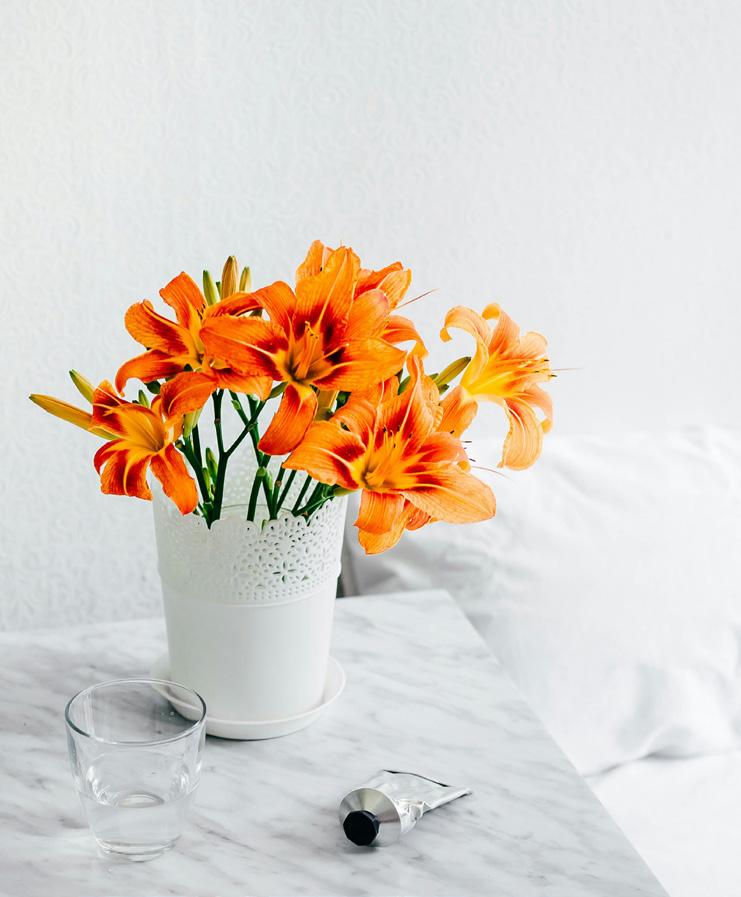

Budgeting for Your Home Renovation
Tips from an Experienced Architect
by Dan Lancaster
Taking on a home renovation can feel like a real adventure—equal parts exciting and, let’s be honest, a little overwhelming. One of the biggest factors that can make or break your project? The budget.
Get it right, and everything flows more smoothly. Get it wrong, and you may end up with unnecessary stress. The good news is, with a little planning (and some insider know-how), you can keep your renovation on track financially and still bring your vision to life. Here are my tried-and-tested budgeting tips to help you navigate your project with confidence.
1 Nail Down Your Budget Early
Before you pick paint colours or browse tiles, get really clear on what you can spend. Your budget is the foundation for every decision that follows— whether it’s about design, materials, or labour. Think about the scale of your renovation, the level of finish you’d like, and any specialist work you might need, such as plumbing, electrics, or structural changes. The earlier you set your figure, the easier it will be to stick to it.
2 Shop Around for Quotes
Never go with the first price you’re given. Take the time to get a few quotes from different contractors and suppliers so you can compare properly. Don’t just look at the total cost—check what’s included, the quality of materials, and the contractor’s track record. An architect can be a huge help here, recommending trusted people and making sure you’re comparing like for like.
3 Separate Needs from Wants
It’s tempting to want everything, but prioritising is key. Start by writing down all the things you’d love to include, then separate them into needs and wants. Needs are the non-negotiables, such as fixing a leaky roof or updating unsafe wiring.
Wants are the nice-to-haves, like underfloor heating or a designer light fitting. When costs creep up— and they often do—this makes it much easier to see where you can compromise without affecting safety or functionality.
4 Have a Contingency Cushion
Even the smoothest renovations can throw up surprises—hidden damp, old wiring, or foundations that need extra work. To save yourself stress later, set aside between 10 and 20 percent of your budget for those “just in case” moments. You’ll thank yourself for it if something unexpected comes up.
5 Keep an Eye on Spending
It’s surprisingly easy for costs to sneak up on you. Regularly check in with your budget as the project moves forward. Whether you prefer a simple spreadsheet, an app, or project management software, the key is to track every expense and compare it against your original plan. A little time spent on admin now saves a lot of stress later.
6 Know Where to Spend and Where to Save
7 Consider Breaking It Into Phases
If your dream project feels just out of reach, don’t panic. You don’t have to do everything at once. Splitting the renovation into phases allows you to spread the costs over time and gives you the flexibility to adjust as life and finances change.


Not everything needs to be top of the range, but cutting corners in the wrong places can cause problems down the line. Always invest in the essentials—the roof, the foundations, the electrics, and the plumbing. Once those are taken care of, you can balance the rest of your budget with clever design choices and mid-range finishes.

Renovating your home is a journey, and like all journeys, it’s smoother with a good map. By setting a clear budget, prioritising wisely, planning for surprises, and keeping track along the way, you’ll give yourself the best chance of success. Most importantly, don’t forget to enjoy the process. After all, you’re creating a home that truly reflects you.
My purpose is to create a home that reflects you, your personality, and your needs and wants.
As an architect and garden designer, I’m always thinking about the connection between inside and outside.


Outside space is the greatest asset of your home, so the inside should make the most of the views and connections to it.
To discuss your requirements please contact me:
Your home is your place in the world, it should be tailored to you
Training - At Home!
by Jacqui Priestley

Who says you need a gym membership or a fancy fitness tracker to stay healthy? Your home is full of opportunities to get moving, eat well, and keep both body and mind in great shape — all while having fun and saving time.

Let’s start with movement. Forget treadmills and spin bikes; household chores are sneaky workouts in disguise! Hoovering counts as cardio (especially if you put on your favourite tunes), polishing surfaces tones your arms, and gardening can burn as many calories as a brisk walk.
Even loading the washing machine or carrying shopping bags gives you a mini strength session — just remember to lift with your knees, not your back! If you’re working from home, try the “commercial break challenge” — do 10 squats, lunges, or star jumps whenever the kettle boils or during ad breaks. Those little bursts soon add up.
When it comes to healthy eating, the home kitchen is your best ally. Make it easy to grab nutritious snacks — keep a bowl of fruit on the counter and pre-cut veggies in the fridge for quick munching.
Batch-cook soups or curries full of colourful vegetables, and swap refined carbs for wholegrains whenever you can. Staying hydrated is key too, so keep a glass or bottle of water nearby. If plain water feels dull, jazz it up with slices of lemon, cucumber, or mint.

Don’t forget about mental fitness. A calm, happy home environment does wonders for wellbeing. Start your day by opening the curtains wide and letting natural light flood in — it lifts your mood and helps regulate your body clock.
Create a small space for relaxation, whether it’s a reading nook, a window seat, or a comfy corner where you can enjoy a few quiet minutes with a cup of tea. Try a few minutes of mindful breathing or stretching between household tasks — it’s amazing how quickly it resets your energy.

And let’s not underestimate the power of social health at home. If you live with family or housemates, turn activities into group fun — a kitchen dance-off while cooking, a step-count competition, or a shared walk after dinner. Even solo living doesn’t mean going it alone; phone a friend while folding laundry, join an online yoga class, or start a virtual book club.
Finally, remember that balance is everything. Rest is just as important as movement, and laughter is one of the best workouts there is. A tidy-up dance, a good giggle, or a cosy evening of self-care all count towards a healthier, happier you.
So next time someone asks how your fitness routine is going, you can smile and say: “I’m training — at home!”



Pre-Marital and Inherited Wealth
Protected or Shared in Divorce?
One of the most frequent questions we are asked as family lawyers is whether money or assets brought into the marriage or inherited during it will be divided on divorce.
There has been a very recent decision in the Supreme Court, known as Standish v Standish, providing important guidance on this very issue and how property deemed to be ‘matrimonial’, and property deemed to be ‘non-matrimonial’ should be dealt with.
The legal issue at the centre of the case was: When does non-matrimonial property become matrimonial property and should this property be shared on divorce?
The key takeaways from the Court decision are that:
• The sharing principle applies only to matrimonial property, not non-matrimonial property.
• The law will look at the source of the assets, rather than what form they are in and whose name they are in, when looking at whether they have become matrimonial.
• The treatment by the spouses of the asset/s in question and their intentions are important in assessing whether they have become matrimonial.
• The transfer of an asset between spouses in a scheme designed to save tax, irrespective of the time period involved, will not normally demonstrate that the asset is being treated as being shared and
therefore has become matrimonial.
• Simply transferring assets between spouses does not automatically convert them into matrimonial property.
I am divorcing – how does this impact me?
Family law judges have a wide discretion under the law and, therefore, decisions often vary according to each couple’s circumstances. As such, caution must be taken when separating couples are looking at cases like Standish against their own, particularly as Standish is an ultra-high net worth case where the financial needs of the parties did not need to be considered due to their substantial wealth.
Pre-nuptial and post-nuptial agreements remain an effective way of protecting assets and avoid being subject to the court’s wide discretion. Following Standish, when contemplating any tax planning, family lawyers recommend entering into a prenuptial or post-nuptial agreement in the event that the relationship breaks down in the future.
How can we help?
Amanda Phillips-Wylds Director and Mediator at Family Law Partners, specialist family lawyers in Ascot. If you think that the Standish case has relevance for your circumstances you can book a meeting with us to consider future planning including pre-nuptial or post-nuptial agreements.

Bloom Where You Are Planted
by Berkshire Gardener Graham Gardening
for Our Mental
Health
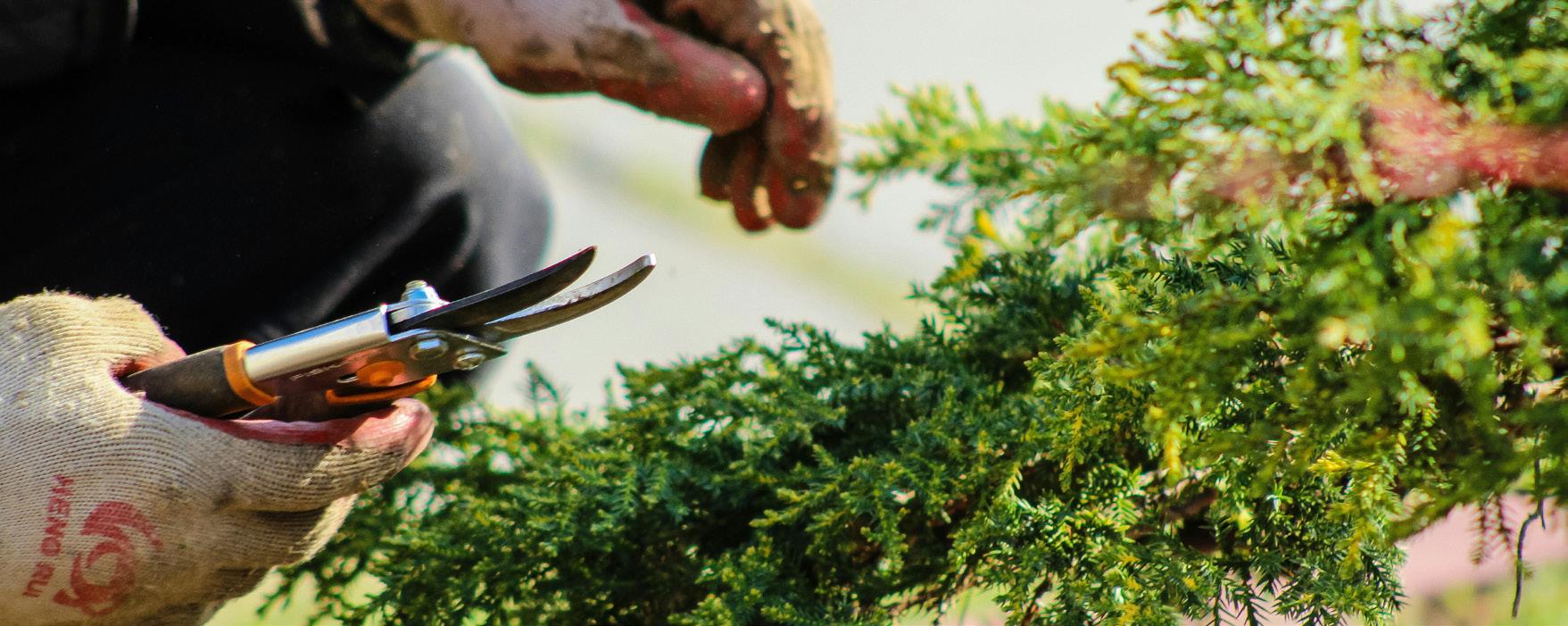
There’s something quietly magical about stepping into a Berkshire garden — the morning mist over the hedgerows, the hum of bees around the lavender, and the earthy scent of freshly turned soil. But beyond the beauty lies a secret benefit: gardening is one of the most effective and natural ways to boost our mental wellbeing.
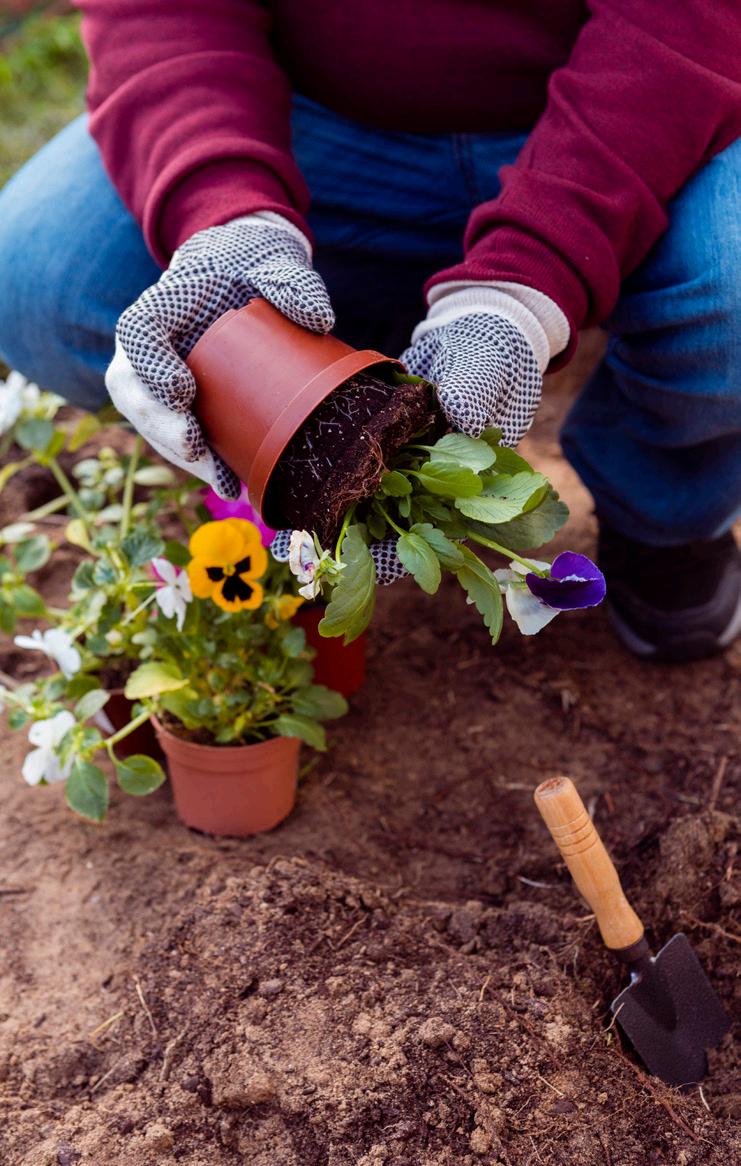


When life feels hectic, the garden offers calm. Time spent outdoors — planting, pruning, or simply pottering — can reduce stress and lift our mood. There’s no rush, no pressure, just the gentle rhythm of nature reminding us that growth takes time. Even a few minutes pulling weeds or watering pots can bring a sense of peace and achievement.
Across Berkshire, from Wokingham to Maidenhead, people are rediscovering the joy of gardening not just as a hobby, but as therapy. The act of nurturing plants mirrors the care we need to give ourselves.
Watching something flourish from a tiny seed or seeing bulbs return each spring gives a reassuring sense of continuity — that life, in all its seasons, renews itself.


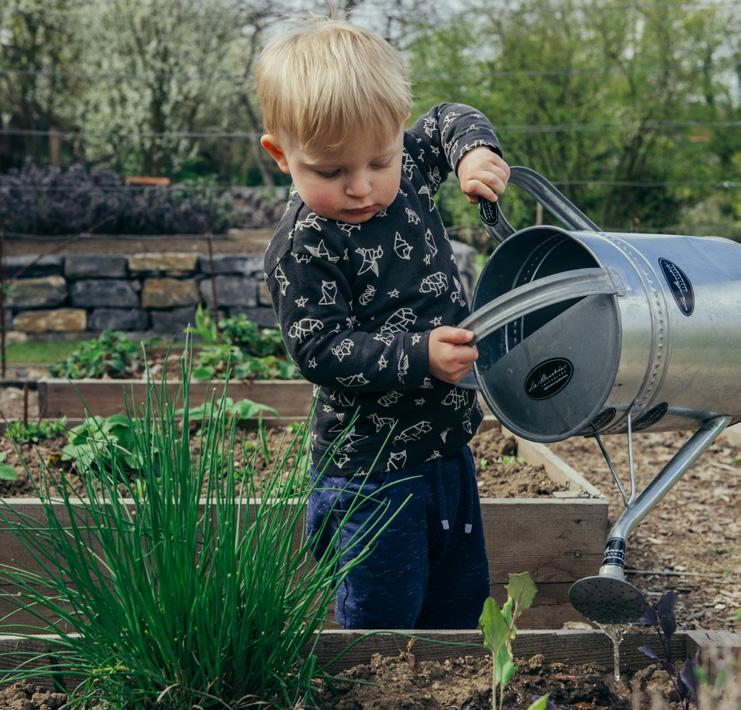
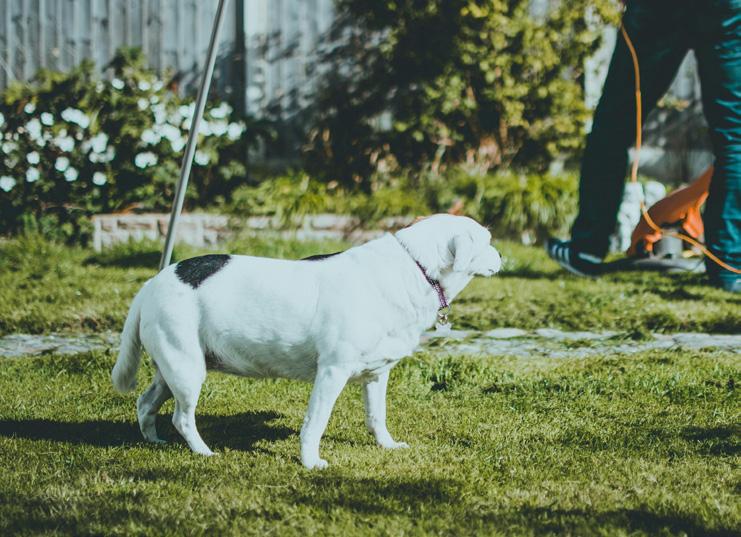
It’s also wonderfully social. Chatting over a fence, swapping cuttings, or joining a local gardening club fosters connection and belonging — something we all crave in today’s busy world.
Even those without big gardens can enjoy window boxes, balcony pots, or community planters that brighten our streets and spirits alike.
And let’s not forget the physical side — a few hours of digging and pruning counts as gentle exercise, all while soaking up fresh air and sunshine. It’s fitness, mindfulness, and purpose rolled into one.
So, if your mind feels cluttered, step outside. Pick up a trowel, breathe in the crisp Berkshire air, and let nature remind you: growth, healing, and happiness can all begin right in your own back garden.



